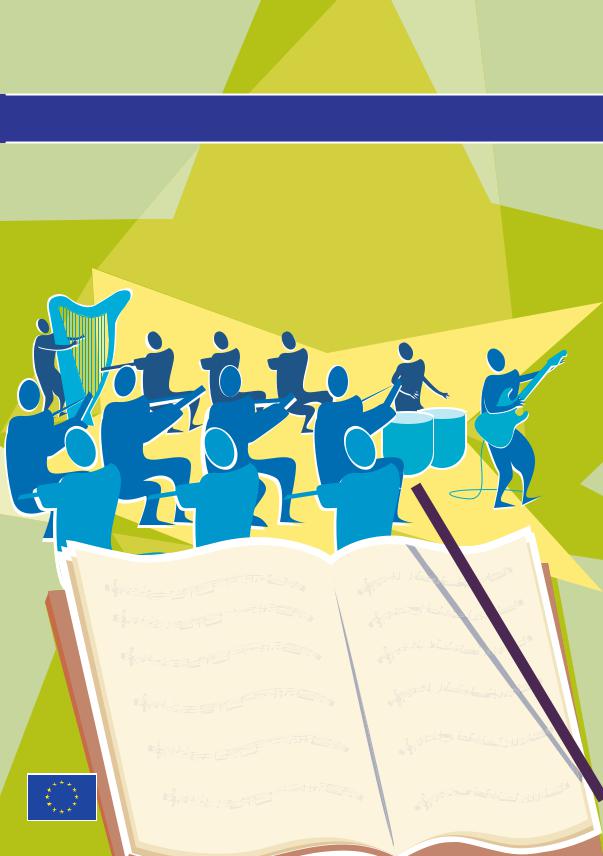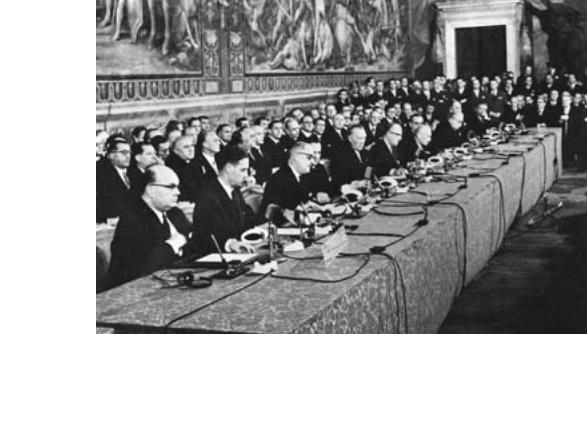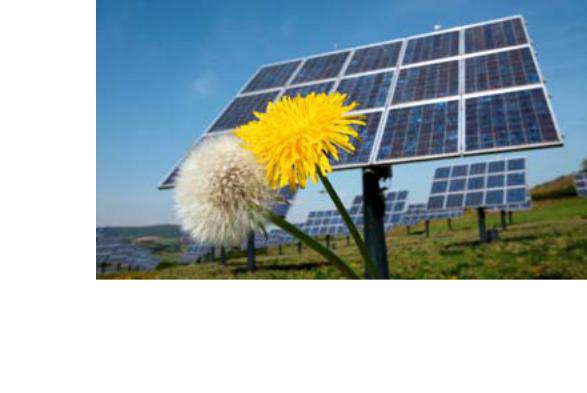
02_EU_institutions
.pdf
How the European Union works
Your guide
to the EU institutions
European Union
You can find this booklet and other short, clear explanations about the EU online at ec.europa.eu/publications
European Commission
Directorate-General for Communication
Publications
B-1049 Brussels
Manuscript completed in July 2007
Cover illustration: EC
Cataloguing data can be found at the end of this publication
Luxembourg: Office for Official Publications of the European Communities, 2007
ISBN 92-79-03653-X
© European Communities, 2007
Reproduction is authorised
Printed in Belgium
PRINTED ON WHITE CHLORINE-FREE PAPER

How the European Union works
Your guide
to the EU institutions

Contents
Introducing the European Union . . . . . . . . . . . . . . . . . . . . . . . . . . . . . . . . . . . . . . . . . |
3 |
The Treaties . . . . . . . . . . . . . . . . . . . . . . . . . . . . . . . . . . . . . . . . . . . . . . . . . . . . . . . . . . . . |
5 |
How the EU takes decisions . . . . . . . . . . . . . . . . . . . . . . . . . . . . . . . . . . . . . . . . . . . . . |
7 |
The European Parliament: |
|
voice of the people . . . . . . . . . . . . . . . . . . . . . . . . . . . . . . . . . . . . . . . . . . . . . . . . . . . . |
11 |
The Council of the European Union: |
|
voice of the member states. . . . . . . . . . . . . . . . . . . . . . . . . . . . . . . . . . . . . . . . . . . . . |
15 |
The European Commission: |
|
promoting the common interest . . . . . . . . . . . . . . . . . . . . . . . . . . . . . . . . . . . . . . . . |
21 |
The Court of Justice: |
|
upholding the law . . . . . . . . . . . . . . . . . . . . . . . . . . . . . . . . . . . . . . . . . . . . . . . . . . . . . |
26 |
The European Court of Auditors:
getting value for your money . . . . . . . . . . . . . . . . . . . . . . . . . . . . . . . . . . . . . . . . . . . 29
The European Economic and Social Committee: |
|
a bridge to civil society. . . . . . . . . . . . . . . . . . . . . . . . . . . . . . . . . . . . . . . . . . . . . . . . . |
31 |
The Committee of the Regions:
bringing the EU closer to the public . . . . . . . . . . . . . . . . . . . . . . . . . . . . . . . . . . . . . 33
The European Investment Bank:
financing economic development. . . . . . . . . . . . . . . . . . . . . . . . . . . . . . . . . . . . . . . 35
The European Central Bank: |
|
managing the euro . . . . . . . . . . . . . . . . . . . . . . . . . . . . . . . . . . . . . . . . . . . . . . . . . . . . |
37 |
The European Ombudsman:
investigating your complaints . . . . . . . . . . . . . . . . . . . . . . . . . . . . . . . . . . . . . . . . . . 39
The European Data Protection Supervisor:
safeguarding your privacy 41
Agencies. . . . . . . . . . . . . . . . . . . . . . . . . . . . . . . . . . . . . . . . . . . . . . . . . . . . . . . . . . . . . . 43

© Corbis
Introducing the
 European Union
European Union
The European Union (EU) is a family of democratic European countries working together to improve life for their citizens and to build a better world.
Family squabbles and occasional crises are what make the news headlines, but away from the cameras the EU is actually a remarkable success story. In just over half a century it has delivered peace and prosperity in Europe, a single European currency (the euro) and a frontier-free ‘single market’ where goods, people, services and capital move around freely. It has become a major trading power, and a world leader in fields such as environmental protection and development aid. No wonder it has grown from six to 27 members and more countries want to join.
The European Union’s success owes a lot to the unusual way in which it works. Unusual because the countries that make up the EU (its ‘member states’) remain independent sovereign nations but they pool their sovereignty in order to gain a strength and world influence none of them could have on their own. This stops short of being a federation, like the United States, but is much more than an organisation for cooperation between governments, like the United Nations. The EU is, in fact, unique.
Pooling sovereignty means, in practice, that the member states delegate some of their decision-making powers to shared institutions they have created, so that decisions on specific matters of joint interest can be made democratically at European level.
The three main decision-making institutions are the:
ÆEuropean Parliament (EP), which represents the EU’s citizens and is directly elected by them;
ÆCouncil of the European Union, which represents the individual member states;
ÆEuropean Commission,which represents the interests of the Union as a whole.
This ‘institutional triangle’ produces the policies and laws that apply throughout the EU. In principle, it is the Commission that proposes new laws, but it is the Parliament and Council that adopt them. The Commission and the member states then implement them, and the Commission enforces them.
The Court of Justice is the final arbiter in disputes about European law.
The Court of Auditors checks the financing of the Union’s activities.
A number of other bodies also have key roles in making the EU work. They are the:
ÆEuropean Economic and Social Committee, which represents the economic and social components of organised civil society;
ÆCommittee of the Regions, which represents regional and local authorities;
ÆEuropean Investment Bank, which finances investment in economic development projects in and outside the EU, and helps small businesses via the European Investment Fund;
UNIONEUROPEAN
THEINTRODUCING 3
EUROPEANTHE WORKSUNION
HOW

UNIONEUROPEAN
THEINTRODUCING 4
EUROPEANTHE WORKSUNION
HOW
ÆEuropean Central Bank, which is responsible for European monetary policy;
ÆEuropean Ombudsman, which investigates complaints about maladministration by EU institutions and bodies;
ÆEuropean Data Protection Supervisor, which safeguards the privacy of your personal data.
In addition, specialised agencies handle certain technical, scientific or management tasks.
The powers and responsibilities of the EU institutions, and the rules and procedures they must follow, are laid down in the Treaties on which the EU is founded. The Treaties are agreed by the presidents and prime ministers of all the EU countries and then ratified by their parliaments.
The following chapters describe the Treaties, the EU institutions and the other bodies and agencies, explaining what each entity does and how they interact.
© Reporters
The signing ceremony of the six-nation Treaty of Rome in 1957.

© EC
The Treaties
The EU is founded on four Treaties:
ÆThe Treaty establishing the European Coal and Steel Community (ECSC), which was signed on 18 April 1951 in Paris, came into force on 23 July 1952 and expired on 23 July 2002.
ÆThe Treaty establishing the European Economic Community (EEC), which was signed on 25 March 1957 in Rome and came into force on 1 January 1958. It is often referred to as ‘the Treaty of Rome’.
ÆThe Treaty establishing the European Atomic Energy Community (Euratom), which was signed in Rome along with the EEC Treaty.
ÆThe Treaty on European Union (EU),
which was signed in Maastricht on 7 February 1992, and came into force on 1 November 1993. It is often referred to as ‘the Maastricht Treaty’.
The ECSC, EEC and Euratom Treaties created the three ‘European Communities’, i.e. the system of joint decision-making on coal, steel, nuclear power and other major sectors of the member states’ economies. The common institutions set up to manage this system were merged in 1967, resulting in a single Commission and a single Council of Ministers.
The EEC, in addition to its economic role, gradually took on a wide range of responsibilities, including social, environmental and regional policies. Since it was no longer a purely economic community, the fourth
Treaty (Maastricht) renamed it simply ‘the European Community’ (EC). As the ECSC Treaty approached expiry in 2002, responsibilities for coal and steel were progressively merged into other Treaties.
At Maastricht, the member state governments also agreed to work together on foreign and security policy, and in the area of ‘justice and home affairs’. By adding this intergovernmental cooperation to the existing Community system, the Maastricht Treaty created a new structure with three ‘pillars’, which is political as well as economic. This is the European Union (EU).
The Treaties are the basis for everything the EU does. They have been amended each time new member states have joined. From time to time the Treaties have also been amended to reform the European Union’s institutions and to give it new areas of
THE EUROPEAN UNION
|
|
|
|
|
|
|
|
|
|
|
|
|
|
|
Community |
|
Common |
|
Police and |
|
|
domain |
|
foreign and |
|
judicial |
|
|
(most |
|
security |
|
cooperation |
|
|
common |
|
policy |
|
in criminal |
|
|
policy |
|
|
|
matters |
|
|
areas) |
|
|
|
|
|
|
|
|
|
|
|
|
|
|
|
|
|
|
|
|
|
|
|
|
|
|
THE TREATIES
TREATIESTHE
5
HOW THE EUROPEAN UNION WORKS
The European Union is founded on its Treaties. Its three ‘pillars’ represent different policy areas with different decision-making systems.

TREATIESTHE
6
HOW THE EUROPEAN UNION WORKS
responsibility. This is always done by a special conference of the EU’s national governments (an ‘intergovernmental conference’ or IGC). Key intergovernmental conferences resulted in:
ÆThe Single European Act (SEA), which was signed in February 1986 and came into force on 1 July 1987. It amended the EEC Treaty and paved the way for completing the single market;
ÆThe Treaty of Amsterdam, which was signed on 2 October 1997 and came into force on 1 May 1999. It extended the pooled sovereignty to more areas involving more citizens’ rights, and closer interaction on social and employment policies;
ÆThe Treaty of Nice, which was signed on 26 February 2001 and came into force on 1 February 2003. It further amended the other Treaties, streamlining the EU’s decision-making system so it could continue to work effectively even after further enlargements;
ÆThe draft Constitutional Treaty, which was agreed and signed in October 2004, but has not come into force, because it was not ratified by all EU countries.
ÆThe Reform Treaty, which was agreed in principle in 2007, but will not come into force until it has been ratified by all member states.
© Picture-alliance/dpa/Zucchi
A clean environment is just one area of many where EU member states have agreed that pooling sovereignty makes sense.

© EC
How the EU takes decisions
Decision-making at European Union level involves various EU institutions, in particular:
Æthe European Parliament (EP),
Æthe Council of the European Union, and
Æthe European Commission.
In general, it is the European Commission that proposes new legislation, but it is the Council and Parliament that pass the laws. In some cases, the Council can act alone. Other institutions also have roles to play.
The main forms of EU law are directives and regulations. Directives establish a common aim for all member states, but leave it to national authorities to decide on the form and method of achieving it. Normally, member states are given one to two years to implement a directive. Regulations are directly applicable throughout the EU as soon as they come into force without further action by the member state.
The rules and procedures for EU decisionmaking are laid down in the Treaties. Every proposal for a new European law must be based on a specific Treaty article, referred to as the ‘legal basis’ of the proposal. This determines which legislative procedure must be followed. The three main procedures are ‘codecision’, ‘consultation’ and ‘assent’.
1. Codecision
Codecision is the procedure now used for most EU law-making. In the codecision procedure, Parliament shares legislative power equally with the Council.
If Council and Parliament cannot agree on a piece of proposed legislation, there will be no new law. The procedure provides for two successive ‘readings’ in each institution. If an agreement is reached in these readings, the law can be passed. If not, it will be put before a conciliation committee, composed of equal numbers of Council and Parliament representatives. Once this committee has reached an agreement, the agreed text is sent again to Parliament and the Council so that they can finally adopt it as law. Conciliation is becoming increasingly rare. Most laws passed in codecision are, in fact, adopted either at the first or second reading as a result of good cooperation between the three institutions.
The diagram overleaf shows the procedure in greater detail. For further information, go to ec.europa.eu/codecision
HOW EUTHE DECISIONSTAKES
7
HOW THE EUROPEAN UNION WORKS

HOW EUTHE DECISIONSTAKES
8
HOW THE EUROPEAN UNION WORKS
The codecision procedure
|
|
1. Proposal from the Commission |
|
|
|
1a. ESC opinion, |
|
2. First reading by the EP |
opinion |
|
3. Amended proposal |
CoR opinion |
|
|
from the Commission |
||
|
|
||||
|
|
|
|
||
4. First reading by the Council
5. Council approves all the EP's amendments
6. Council can adopt the act as amended
7. EP has approved |
9. Common position |
|
10. Communication |
||
|
from the Commission |
||||
the proposal without |
of the Council |
|
|||
|
on common position |
||||
amendments |
|
|
|
||
|
|
|
|
||
|
|
|
|
|
|
|
|
|
|
|
|
|
|
|
|
|
|
8. Council can |
|
|
|
|
|
adopt the act |
|
|
|
|
|
|
|
|
|
|
|
11. Second reading by the EP
12. EP approves common position or makes no comments
13.Act is deemed to be adopted
14. EP rejects common position
15. Act is deemed not to be adopted
16. EP proposes |
|
17. Commission |
|
amendments to |
|
||
|
opinion on EP's |
||
common position |
|
||
|
amendments |
||
|
|
|
|
|
|
|
|
|
|
|
|
|
18. Second reading by the Council |
|
|
|
|
|
|
||||||||
|
|
|
|
||||||||||||||||
|
|
|
|
|
|
|
|
|
|
|
|
|
|||||||
|
|
|
|
|
|
|
|
|
|
|
|
|
|
|
|
|
|
|
|
|
|
|
|
|
|
|
|
|
|
|
|
|
|
|
|
|
|
|
|
19. Council approves amended common position |
21. Council does not approve the |
||||||||||||||||||
(i) by a qualified majority if |
(ii) unanimously if the |
||||||||||||||||||
amendments to the common position |
|||||||||||||||||||
the Commission has delivered |
Commission has delivered |
||||||||||||||||||
|
|
|
|
|
|
|
|
||||||||||||
a positive opinion |
a negative opinion |
|
|
|
|
|
|
|
|
||||||||||
|
|
|
|
|
|
|
|
||||||||||||
|
|
|
|
|
|
|
|
|
|
|
|
|
|
|
|
||||
|
|
|
|
|
|
|
|
|
|
|
|
|
|
|
|
|
|||
|
|
|
|
|
|
22. Conciliation Committee is convened |
|||||||||||||
20. Act adopted as amended |
|
|
|
|
|
|
|||||||||||||
|
|
|
|
|
|||||||||||||||
|
|
|
|
|
|
|
|
|
|
|
|
|
|
|
|
|
|
|
|
|
|
|
23. Conciliation procedure |
|
|
|
|
|
|
|
|
||||||||
|
|
|
|
|
|
|
|
|
|
|
|||||||||
|
|
|
|
|
|
|
|
|
|
|
|
||||||||
|
|
|
|
|
|
|
|
|
|
|
|||||||||
24. Conciliation Committee agrees on a joint text |
29. Conciliation Committee does not |
||||||||||||||||||
|
|
|
|
|
|
|
|
|
|
|
|
agree on a joint text |
|||||||
|
|
|
|
|
|
|
|
|
|
|
|||||||||
|
|
|
|
|
|
|
|
|
|
|
|
|
|
||||||
|
|
|
|
|
|
|
|
|
|
|
|
|
|
|
|||||
25. Parliament and Council adopt the |
|
|
27. Parliament and |
|
|
||||||||||||||
|
|
|
30. Act is not adopted |
|
|||||||||||||||
act concerned in accordance with the |
Council do not approve |
|
|
||||||||||||||||
|
|||||||||||||||||||
|
joint text |
|
|
the joint text |
|
|
|
|
|
|
|
|
|||||||
26. Act is adopted |
|
28. Act is not adopted |
|
|
|
